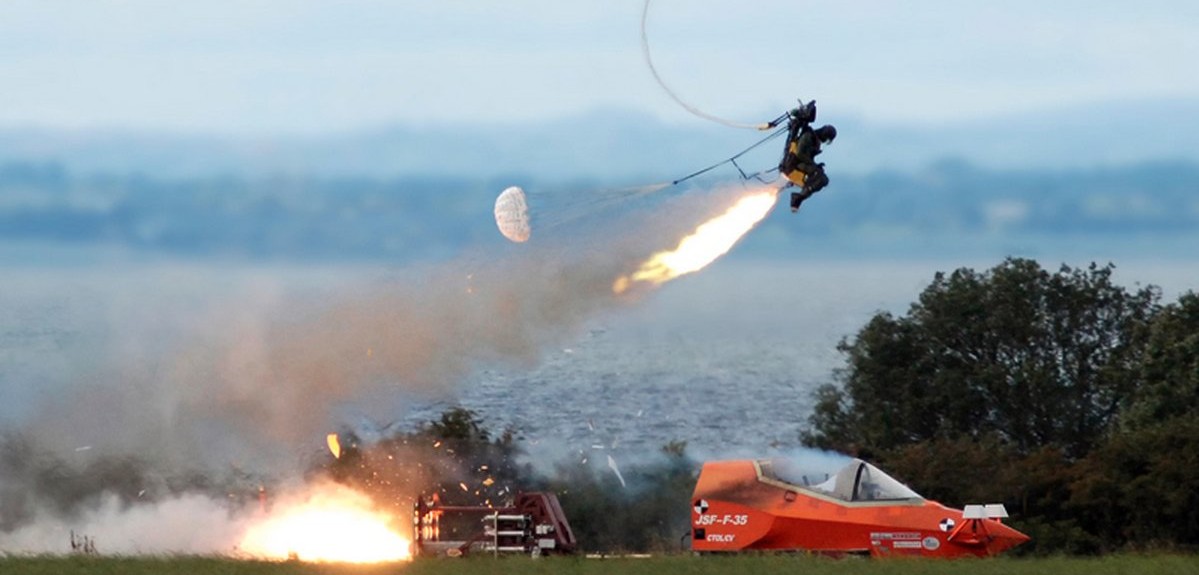If you are an F-35 pilot that weighs below 136 pounds, ejecting from the cockpit during can spell death.
A report from the Pentagon found that the F-35 Joint Strike Fighter is not ready for military use because developers have yet to fix its bugs. One of the enduring issues plaguing the joint strike fighter is the F-35 ejection seat and its weighty, state-of-the-art helmet. During testing, contractors found that lightweight pilots who used the ejection seat at low speeds were at risk for neck injury. At high speeds, those injuries could range from severe to fatal.
The military has a plan for fixing this issue, but it will unfortunately take an entire year to complete:
Fix #1: Add a heavy/light setting switch to the F-35 ejection seat. This will allow pilots to adjust their seat to their weight before even taking off. In the event that the pilot has to eject, a seat on the ‘light’ setting will delay its ejection for a fraction of a second to decrease stress on the neck.
Fix #2: Add a ‘support device’ to the parachute itself. This will keep the pilot’s head from rolling backwards during their descent.
Fix #3: Redesign the jet’s hi-tech helmet so it’s less heavy. Right now, the $400,000 helmet weighs 5.1 pounds. Considering that the human head is already quite heavy on its own, that additional weight can mean the difference between a healthy or broken neck in a ejection situation. Contractors are trying to reduce that weight to somewhere between 4.6 and 4.8 pounds.
The first two fixes will be ready to go by the end of 2016, but the helmet will take up to nine months longer to complete.
In addition to being delayed, the F-35 program has dropped 20 jets from its production order.




































